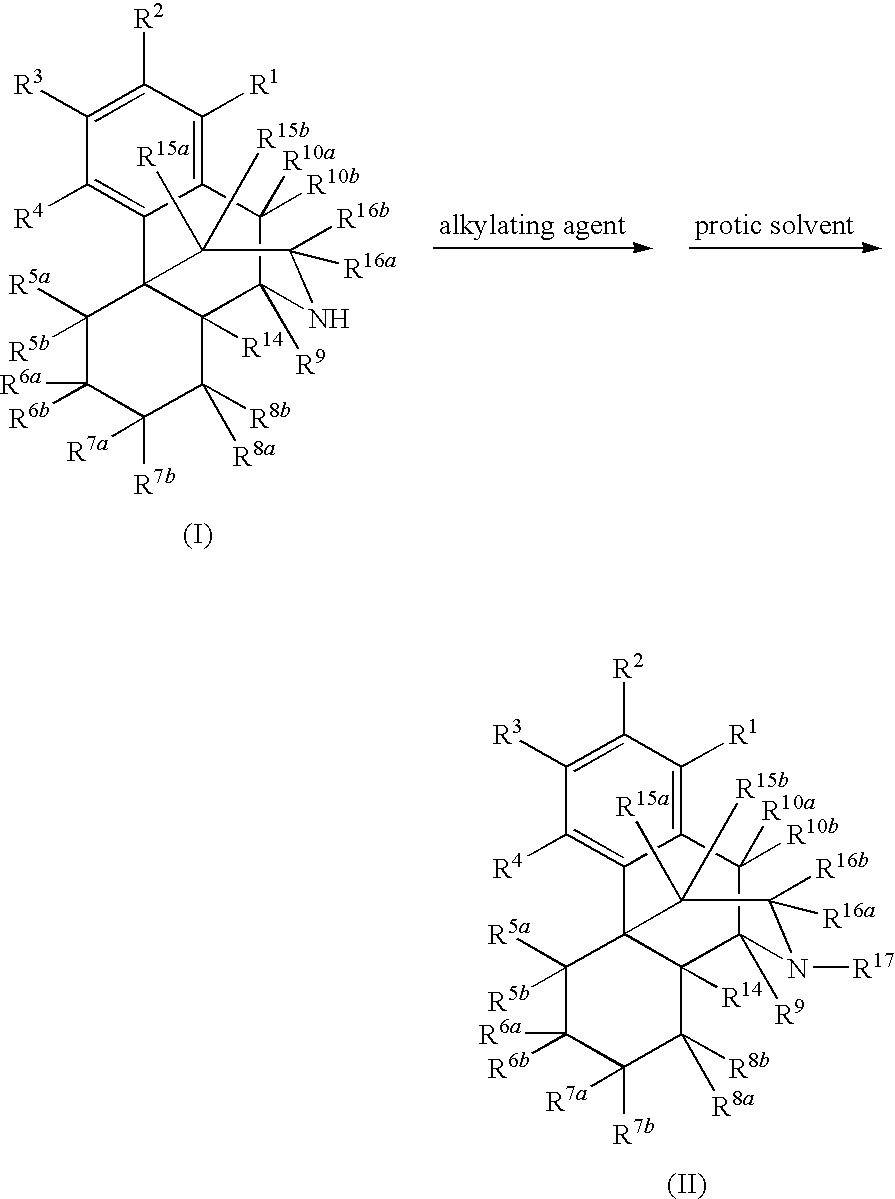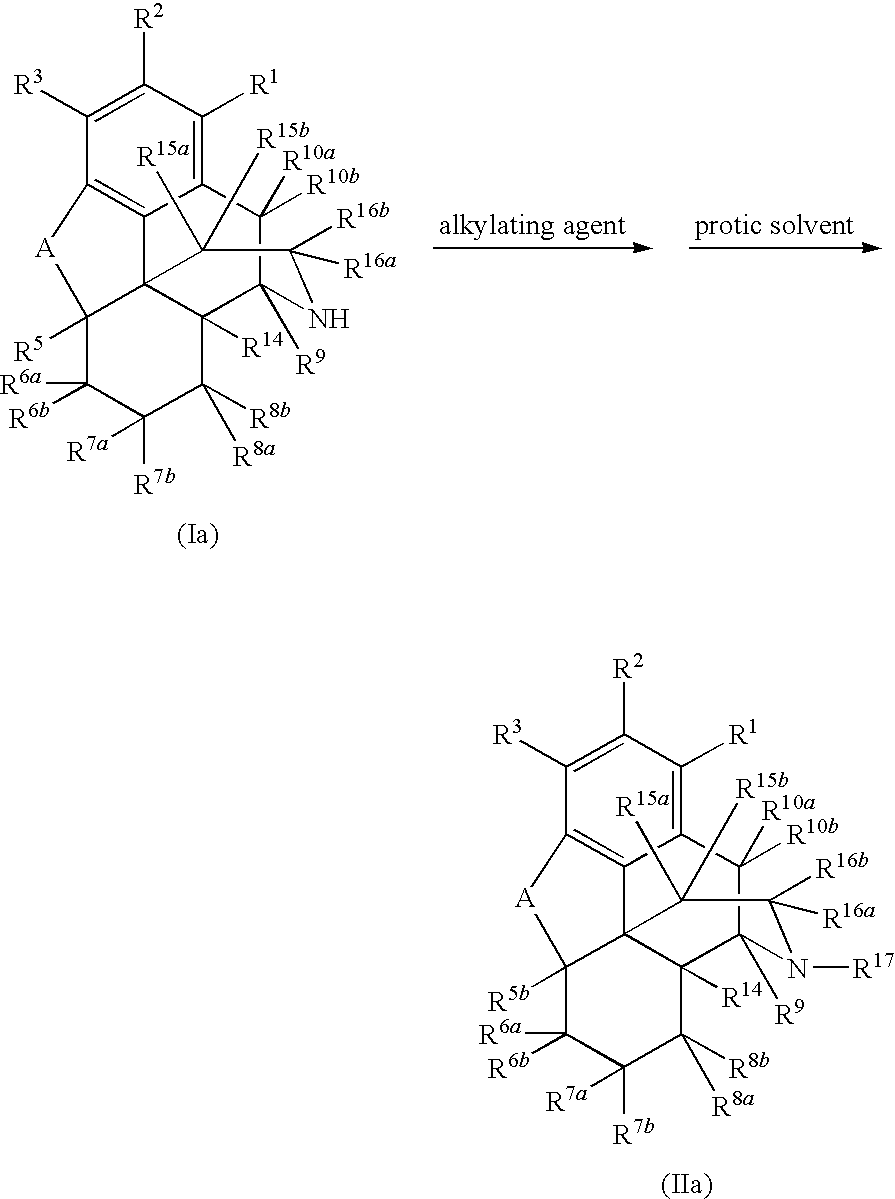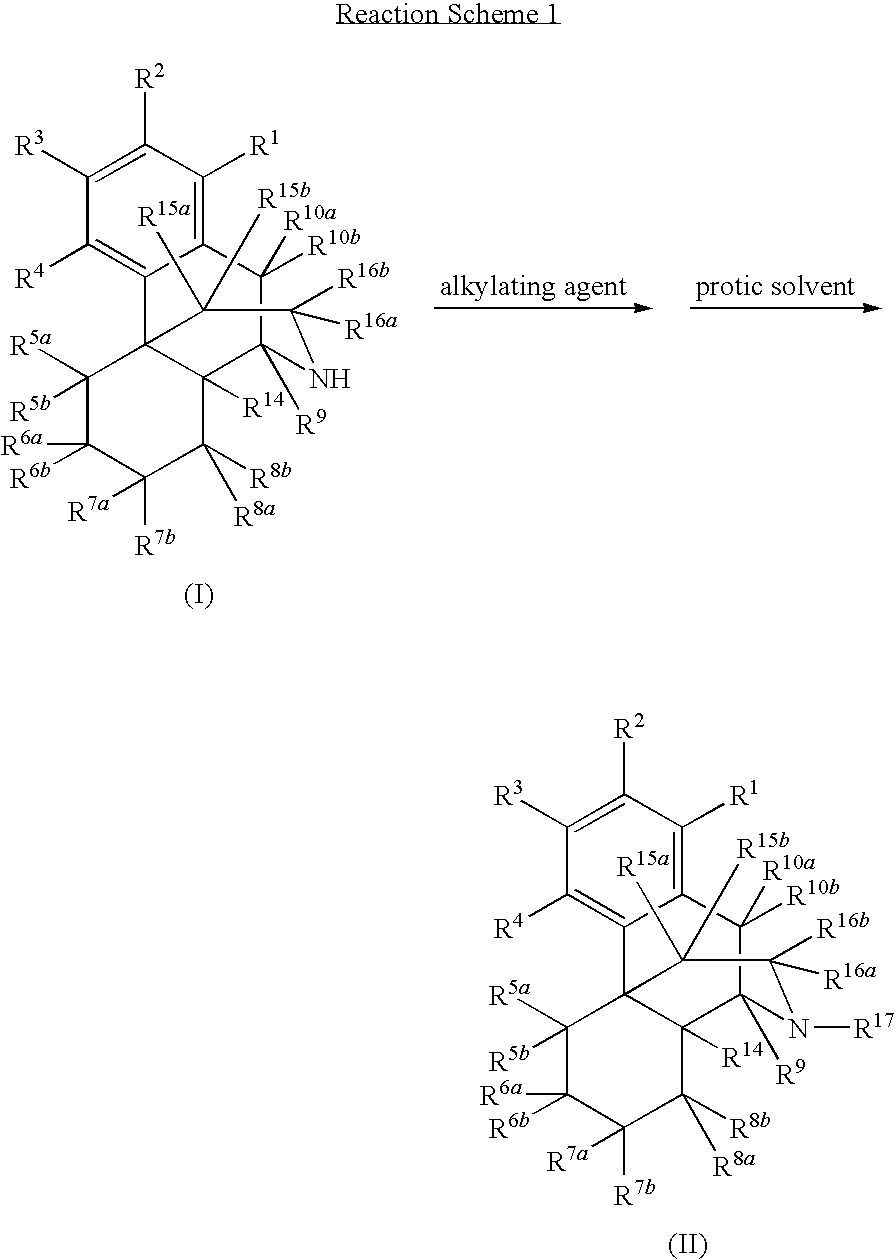Processes for the synthesis of tertiary amines
a technology of tertiary amines and amines, applied in the direction of organic chemistry, etc., can solve the problems of direct route producing unacceptably high levels of undesired side products, relatively high cost of noroxymorphone, and relatively poor yields of only about 60%-80%
- Summary
- Abstract
- Description
- Claims
- Application Information
AI Technical Summary
Benefits of technology
Problems solved by technology
Method used
Image
Examples
example 1
Synthesis of Naltrexone by Direct N-Alkylation of Noroxymorphone with an Alkyl Halide
[0104]Naltrexone was prepared in high yield by direct N-alkylation of noroxymorphone with an alkyl halide in the presence of a protic solvent. Accordingly, 5.5 g of noroxymorphone, 16.5 mL of N-methyl-2-pyrrolidinone (NMP), and 1.65 mL of water were added to a flask (100 mL, 3 necked). The flask was flushed with nitrogen, and the reaction mixture was kept under nitrogen throughout the reaction. Next, 2.4 mL of bromomethylcyclopropane and 2.5 mL of triethylamine (NEt3) were added to the flask, which was then heated at 70° C. for 2 h. An additional 2.5 mL of NEt3 was added to the flask, and the mixture was heated at 70° C. for 7.5 h. HPLC analysis revealed that the reaction is completed with noroxymorphone at less than two percent or one percent and undesired side products such as quaternary ammonium salt and O-alkylation of phenol group were present at less than two percent or were undetectable. The ...
example 2
Synthesis of (+)-Naltrexone
[0105]A similar method of synthesis was used to prepare (+)-naltrexone in high yield. For this, a flask (100 mL, 3 necked) was charged with 5.5 g of (+)-noroxymorphone, 16.5 mL of NMP, and 1.65 mL of water. The flask was flushed with nitrogen, and the reaction mixture was kept under nitrogen throughout the reaction. Next, 1.86 mL of bromomethylcyclopropane and 2.5 mL of NEt3 were added to the flask, which was heated at 70° C. for 2.5 h. An additional 2.5 mL of NEt3 was added to the flask, and the mixture was heated at 70° C. for 2.5 h. An additional 0.56 mL of bromomethylcyclopropane was added, and the mixture was heated at 70° C. for 2.5 h. HPLC analysis confirmed that the reaction is completed with noroxymorphone at less than two percent or one percent and the undesired side products were present at less than two percent or were undetectable. The mixture was cooled to room temperature, and water (82.5 g) was added to give a precipitate. The pH of the mix...
example 3
Synthesis of (+)-Naltrexone in the Presence of a Large Excess of Alkyl Halide
[0106]The following example was designed to determine the efficiency of this process when it is carried out in the presence of a large excess of alkyl halide. A mixture of (+)-noroxymorphone (5.00 g), acetonitrile (ACN) (20 mL), water (1.50 mL), NMP (15 mL), bromomethylcyclopropane (2.4 mL), and NEt3 (2.4 mL) was heated at 70-85° C. for 28 h. HPLC analysis showed that both of undesired side products such as quaternary ammonium salt and O-alkylation of phenol group were less than two percent. Additional bromomethylcyclopropane (1.74 mL) was added and the reaction mixture was heated for another 6 h. HPLC analysis showed that both undesired side products quaternary ammonium salt and O-alkylation of phenol group were still less than two percent.
PUM
| Property | Measurement | Unit |
|---|---|---|
| temperature | aaaaa | aaaaa |
| pKa | aaaaa | aaaaa |
| pKa | aaaaa | aaaaa |
Abstract
Description
Claims
Application Information
 Login to View More
Login to View More - R&D
- Intellectual Property
- Life Sciences
- Materials
- Tech Scout
- Unparalleled Data Quality
- Higher Quality Content
- 60% Fewer Hallucinations
Browse by: Latest US Patents, China's latest patents, Technical Efficacy Thesaurus, Application Domain, Technology Topic, Popular Technical Reports.
© 2025 PatSnap. All rights reserved.Legal|Privacy policy|Modern Slavery Act Transparency Statement|Sitemap|About US| Contact US: help@patsnap.com



